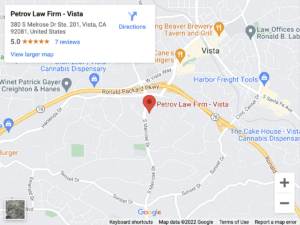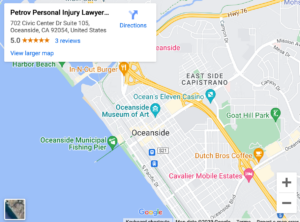
Back pain is one of the most common health complaints in America. About 80% of Americans will experience back pain during their lives. This pain can range from mild discomfort to debilitating pain.
Back injuries are the most common cause of missed work. They also form the basis for more workers’ compensation claims than any other injury. Medical costs plus indirect costs like lost productivity due to back pain cost the U.S. economy $12 billion annually.
Read on to learn about common types of back injuries and how to get injury compensation for an injured back.
What Are the Structure and Function of Your Back?
Your back must perform two contradictory functions. It must provide the strength and structure to carry the weight of your upper body and head. But it must also provide flexibility so you can twist and bend your body.
Your spine contains multiple vertebrae to accomplish these tasks. These vertebrae can move relative to each other, giving your back flexibility. When they align, the vertebrae form a column to hold your body up.
You have 24 vertebrae in your back:
- Seven cervical vertebrae in your neck
- 12 thoracic vertebrae in your chest that connect to your ribs
- Five lumbar vertebrae in your lower back
Below your back, the sacrum consists of several vertebrae that fuse after birth. The sacrum connects your spine to your pelvis.
Each vertebra includes a cylindrical body and wing-shaped processes. Ligaments connect adjacent vertebrae and hold 24 ribs to the 12 thoracic vertebrae.
The gap between the body and processes forms the spinal canal. The spinal canal protects the spinal cord as it passes through the back.
Discs sit between vertebrae. Each disc has a fibrous outer annulus and a gel-like inner nucleus. This structure helps them cushion the vertebrae. The annulus also provides a smooth joint surface on which the vertebrae can move.
Several large muscles sit in your back. These muscles provide the strength to move your back and support your weight. Tendons anchor muscles to the spinous process, ribs, shoulder blades, skull, and pelvis.
What Are the Causes of Back Injuries?
Back injuries can result from almost any type of accident that causes back trauma. Some forms of trauma that can injure your back include:
Overuse Injury
Repetitive motions can damage your back. Normally, your body heals the small tears and cracks that develop in your tissues due to stress. But when you repeat the same motions, the damage accumulates instead of healing.
Overuse injuries often happen due to your working conditions. Workers who spend much of their time standing, walking, lifting, and carrying can develop repetitive motion back injuries.
Hyperextension Injury
Hyperextension can happen whenever your back gets stretched, bent, or twisted further than normal. A common cause of hyperextension is a car accident.
When you collide with another vehicle, your body keeps moving at the same speed and in the same direction as before the collision. When your body hits the seat belt, it bends and twists. This hyperextends your back, stretching the muscles, tendons, and ligaments.
When you come to a stop, your back compresses. The compression force can crush your discs and even fracture your vertebrae.
Blunt Force Injury
A blunt force hits your back without penetrating the skin. You might experience a blunt force injury when you hit the ground after a slip and fall or an elevated fall.
Penetrating Injury
Penetrating injuries happen when a foreign object pierces your back. These injuries can lead to complications like infections and organ damage.
What Are Some Examples of Back Injuries?
Back injuries can manifest in many ways depending on the tissue that gets damaged. Some examples of back injuries include:
Back Strain or Sprain
Back strain happens when you tear or stretch the tendons or muscles.
Symptoms of a back strain include:
- Muscle spasms
- Swelling
- Stiffness
- Pain
- Weakness
Back sprains happen when you stretch or tear the ligaments that hold your spine together.
Symptoms of back sprains include:
- Pain
- Back instability
- Limited range of motion
- Swelling
- Pop in your back when you get injured
Strains and sprains generally heal in four to six weeks without surgery. Your doctor will likely prescribe rest, which may interfere with your work schedule.
Damaged Disc
Compression forces on your back can damage your discs. When the fibers of the annulus separate, the nucleus can herniate through the annulus. The bulge can press on nearby nerves, causing pain, stiffness, and weakness.
Fractured Vertebra
When a vertebra is subjected to powerful forces, it can fracture. The fractured vertebra can dislocate or break into fragments that can sever or compress the spinal cord. If the spinal cord gets severed, you will experience paralysis. If it gets compressed, you could experience radiating nerve pain and loss of sensation.
What Compensation Can You Recover for a Back Injury?
When people cause accidents through negligence, they bear liability for the resulting damage. To recover injury compensation after an accident, you must show that someone owed you a duty of care, and their actions or omissions breached that duty of care – causing your back injury.
For example, suppose that a distracted driver hits you in a motorcycle accident. All drivers have a legal duty to drive with reasonable care — they must pay attention to the road and other road users. In this case, the distracted driver breached the duty of care by failing to pay attention while driving.
If you can prove negligence, you can recover compensation for your economic and non-economic losses.
Your economic losses include all of the financial costs of your injuries, such as your medical bills, lost income, and diminished earning capacity. In the case of a back injury, you could have long-term disabilities that impact your ability to earn a living.
Your non-economic losses include all of the ways your injuries diminish your quality of life. Pain, mental anguish, and inability to perform tasks will support a claim for non-economic damages.
A back injury can permanently disable you. You might have limited work options if you cannot stand, sit, walk, or bend. This might leave you unable to pay for medical treatment or even meet your living expenses. To discuss your options for seeking compensation for your back injury, contact the experienced Vista personal injury attorneys from Petrov Personal Injury Lawyers at (619) 344-0360 to schedule a free consultation.


